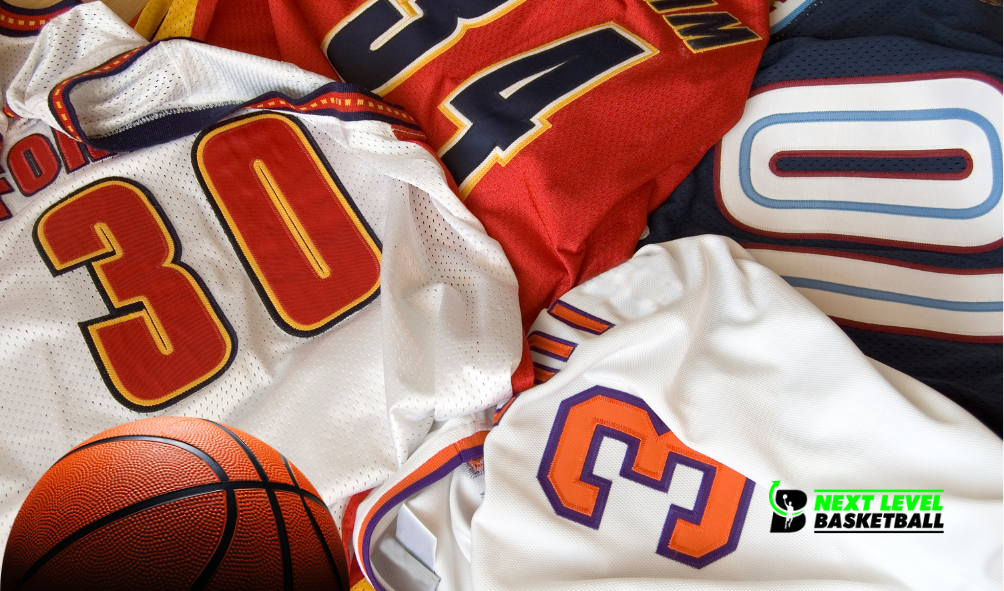Introduction To Basketball Apparel
Basketball apparel has evolved significantly over the years, driven by the need for improved performance, comfort, and style. The right clothing can make a substantial difference on the court, influencing how players move and feel during a game. As one of the most physically demanding sports, basketball requires uniforms that accommodate the needs of vigorous activity and constant movement. Historically, jerseys were crafted from heavy materials that limited airflow and retained moisture, often making them uncomfortable during intense games.
However, advancements in textile technology have revolutionized basketball apparel, offering innovative fabrics that enhance a player’s performance.
Today, the focus is on materials that combine lightweight characteristics with durability. The modern basketball jersey must be breathable, allowing air to circulate and regulate the body’s temperature, effectively wicking away sweat to maintain a dry and comfortable experience. This not only helps players stay cool but also reduces the risk of chafing and skin irritation. Stretchability and flexibility are also crucial, ensuring that jerseys move seamlessly with the players, enabling a full range of motion without restrictions.
The development of synthetic fibers such as polyester and elastane has been instrumental in achieving these requirements, becoming the preferred choice for basketball jerseys. These materials offer excellent resilience, maintain their shape, and provide the sleek, professional look that’s essential for today’s athletes.
Key Features Of Ideal Basketball Material
When selecting the ideal material for basketball shirts and jerseys, several key features must be considered to ensure optimum performance and comfort. Firstly, moisture-wicking capability is paramount. Basketball is a high-intensity sport that generates a lot of sweat, and materials that wick away moisture keep players dry and comfortable. This not only enhances performance but also reduces the risk of chafing and skin irritations.
Breathability is another critical feature. Fabrics that allow air circulation help regulate body temperature, preventing overheating during intense play. Lightweight materials are also preferred, as they allow for greater freedom of movement, letting players perform at their best without the encumbrance of heavy, bulky fabrics. Durability is equally important. Basketball involves a lot of physical contact, so the material must withstand wear and tear, maintaining its shape and appearance after multiple washes.
Additionally, stretchability is essential for providing the necessary flexibility, accommodating the dynamic movements of basketball, such as jumping, running, and rapidly changing direction. Comfort cannot be overlooked; soft textures that feel gentle against the skin contribute to a pleasant wearing experience. Finally, colorfastness ensures that jerseys maintain vibrant colors despite frequent washing and exposure to the elements. Incorporating all these features ensures that basketball shirts and jerseys perform well, look great, and provide players with the comfort and mobility they need on the court.
Breathability And Moisture Wicking
When it comes to selecting the best clothing material for basketball shirts and jerseys, breathability and moisture-wicking are critical features to consider. In the fast-paced, high-energy environment of basketball, athletes need apparel that helps regulate body temperature and keeps them dry. Breathability refers to the fabric’s ability to allow air to circulate close to the skin, which helps dissipate excess heat and prevent overheating.
Materials like polyester, often used in sportswear, are designed to be lightweight and breathable, promoting airflow and ventilation. This characteristic is essential for maintaining comfort during long and intense games or practice sessions.
Moisture wicking, on the other hand, is the fabric’s ability to draw sweat away from the body, moving it to the outer surface of the garment where it can evaporate more quickly. This functionality helps ensure that the skin remains dry even during the most strenuous activities, reducing the risk of chafing and discomfort. Advanced synthetic fabrics are engineered to provide superior moisture management compared to natural fibers, offering athletes a significant advantage.
By actively managing sweat and enhancing breathability, these materials contribute to improved performance and focus. As technology advances, cutting-edge textiles continue to emerge, promising even greater enhancements in breathability and moisture wicking, making performance sportswear ever more effective and comfortable for athletes at all levels.
Durability And Flexibility In Fabrics
When selecting the best clothing material for basketball shirts and jerseys, considering both durability and flexibility is crucial. These garments must withstand the rigors of intense physical activity while ensuring that players can move freely and comfortably. Polyester is a popular choice, known for its durability; it resists stretching and shrinking, maintaining its shape and form even after numerous washes. This synthetic fabric is also resilient against wear and tear, which is particularly important given the frequency at which basketball players engage in dynamic movements such as running, jumping, and quick directional changes.
In addition to durability, flexibility is a vital characteristic. Basketball involves a wide range of motions, thus the fabric must provide ease of movement without restriction. Spandex, often blended with polyester, is highly regarded for its excellent stretchability, allowing the fabric to move seamlessly with the player’s body. This elasticity ensures that jerseys fit snugly while accommodating a player’s range of motion, reducing the risk of garment-induced discomfort or distraction on the court.
Moisture-wicking properties often accompany such fabrics, as they draw sweat away from the body, promoting comfort and performance. By integrating these qualities, the materials in high-performance basketball gear offer both robustness and the necessary flexibility, meeting the demands of this fast-paced sport and enhancing the athlete’s overall experience.
Popular Materials: Pros And Cons
When it comes to selecting the best materials for basketball shirts and jerseys, several factors are crucial, such as moisture management, breathability, durability, and comfort. Among the popular materials, polyester stands out due to its lightweight nature and excellent moisture-wicking properties. It efficiently draws sweat away from the skin, keeping players dry and comfortable during intense games. Moreover, polyester holds its color well and resists shrinking, making it a durable choice.
However, it is not as breathable as some natural fibers, which could be a drawback for those who prioritize ventilation.
Cotton, another well-liked material, is celebrated for its softness and comfort. It is a breathable natural fiber, which allows air circulation and keeps the skin cool. Unfortunately, cotton tends to retain moisture, which could lead to a heavy, clingy feel during sweaty games. A blend of cotton and synthetic fibers often attempts to address this issue, offering a compromise between breathability and moisture management.
Mesh, often made from nylon or polyester, is another prevalent choice, providing excellent breathability due to its netted design. It is lightweight and aids in ventilation, helping to regulate body temperature. However, its durability may not match that of solid fabrics, and repeated washing can potentially wear it out faster. Each material offers distinct benefits, and the choice often boils down to personal preference and specific performance needs.
Sustainable And Eco-Friendly Options
In the realm of sustainable and eco-friendly options for basketball shirts and jerseys, organic cotton and recycled polyester stand out as two of the most promising materials. Organic cotton is cultivated without harmful pesticides and synthetic fertilizers, ensuring that its production is less harmful to the environment. This method of cultivation also promotes healthier soil and waterways, contributing to a more sustainable ecosystem.
When used in basketball shirts, organic cotton provides a soft, breathable, and comfortable fabric that is gentle on the skin, ideal for both players and fans who prioritize comfort and ecological consciousness.
Recycled polyester, on the other hand, offers a dynamic alternative by utilizing materials such as plastic bottles and industrial polyester waste. This not only reduces landfill waste but also diminishes the reliance on virgin petroleum-based resources. The process involves breaking down plastic into small chips and transforming it into fabric, which retains the durability and moisture-wicking properties essential for high-performance sportswear.
Furthermore, advancements in technology have improved the texture and quality of recycled polyester, making it a viable contender for sports apparel.
Both organic cotton and recycled polyester offer sustainable solutions without compromising on the performance attributes necessary for basketball apparel. By opting for eco-friendly materials, manufacturers can significantly reduce the environmental impact of production, while encouraging a more responsible approach to fashion.
Let your child learn and enhance their basketball skills. Enroll him/her in a group basketball training with the best basketball coaches at Next Level Basketball today. Contact 954-621-8470 for their first youth basketball development session. Check us out on our Facebook page for regular basketball updates!





